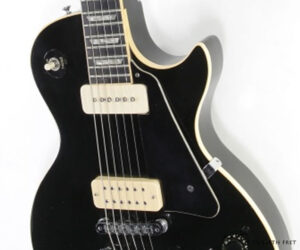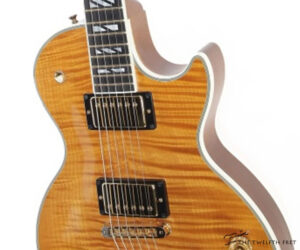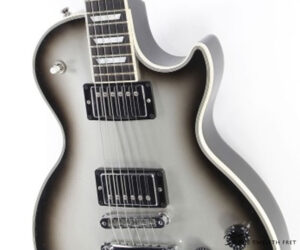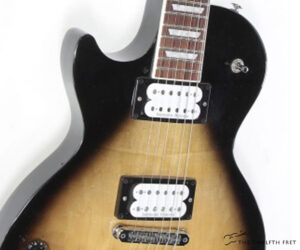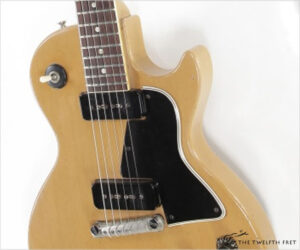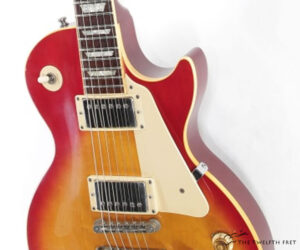The Gibson Les Paul Pro Deluxe was built from 1978 to 1982 and blended features of several previous Les Paul models. Based on the Les Paul Deluxe, the Pro Deluxe had P-90’s in place of mini-humbuckers, a Maple neck and Ebony fingerboard with trapezoidal position markers.
Les Paul
Introduced in 2003 and built at the Nashville Tennessee shop, the Gibson Les Paul Supreme is a high-end take on the classic design and features carved, highly figured Maple top and back. The construction of the Gibson Les Paul Supreme differs from the standard Les Paul though it uses the same basic materials as the Les Paul Custom. The carved top and back set are bookmatched, highly flamed Maple, on either side of a chambered Mahogany core
As Guitar of the Week number 16 in 2007, this Gibson Les Paul Classic Custom in Silverburst is one of 400 built. The Classic Custom was offered from 2007 to 2008, and from 2011 to 2012. Merging elements of the Les Paul Classic and Custom models, the Gibson Les Paul Classic Custom starts with a weight-relieved Mahogany body with carved Maple cap paired with a Mahogany neck and Ebony fingerboard.
This instrument has sold
MORE →Here we’re looking at a Gibson Les Paul Studio LH (Left Handed) model with gloss finish, fingerboard binding and trapezoid position markers. Since it first appeared in 1983, the Les Paul Studio has been available in a range of configurations. All have delivered the essential Les Paul experience and is one of the better deals in quality electric guitars.
This instrument has sold
MORE →The Gibson Les Paul Special TV model appeared in 1955, with the ‘TV’ referring to a special ‘limed’ finish intended to make the guitar more visible on black and white televisions and films. This finish had become available in 1954 on the Les Paul TV, a single-pickup Les Paul Junior. Both models used a slab Mahogany body with no Maple cap, and a Mahogany neck, with a bound Rosewood fingerboard, which into the mid 1960’s meant Brazilian Rosewood.
Presented here is a splendid 1993 Gibson Les Paul Standard, thoughtfully enhanced with a host of wiring and hardware upgrades. This meticulously preserved instrument retains all of its original components, while introducing noteworthy improvements.
